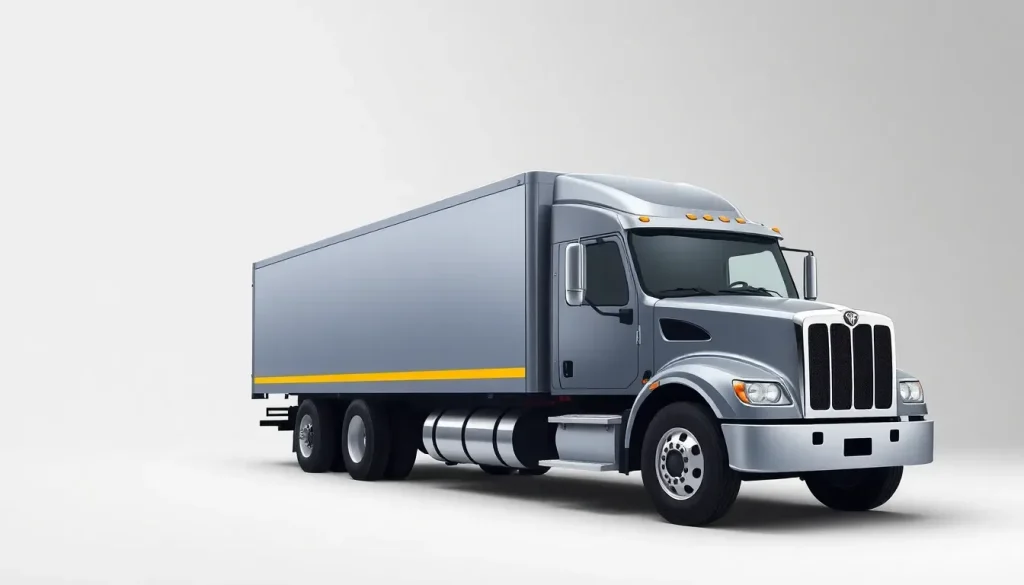Winning Truck Service Process Explained

In the fast-evolving world of truck maintenance, staying ahead of the curve is not just a goal but a necessity. Technological advancements are reshaping how repairs and diagnostics are performed, pushing technicians to adopt new skills and tools. Understanding this landscape is crucial for both seasoned professionals and newcomers in the industry.
As we delve into the intricacies of truck service processes, we will explore the essential practices that not only enhance efficiency but also ensure safety and reliability on the road. Whether you’re managing a fleet or working as a technician, grasping these concepts will be invaluable.
- The Dominance of Electronics in Truck Maintenance
- The Importance of Process Over Instinct
- Returning to Fundamental Skills
- Transforming Competition into Continuous Improvement
- Checklist for Preventative Maintenance (PM) Services
- Understanding PM Services for Trucks
- The Cost of PM Services
- Frequency of Truck Services
The Dominance of Electronics in Truck Maintenance
Modern trucks are more than just powerful engines on wheels; they are intricate systems filled with advanced electronics. This shift towards an electronic-dominated landscape is a game-changer for technicians. According to Larry Fowler, senior manager of operations support at Cox Automotive, the focus has shifted significantly from manual diagnostics to computer-based systems.
Now, technicians can no longer rely solely on traditional tools. The reality is that:
- Over half of all repairs require the use of a diagnostic computer.
- Manufacturers are equipping trailers with sophisticated sensors and telematics.
- Data feeds from these systems are essential for ensuring optimal performance.
As a result, equipment managers must prioritize the training of their service teams to be proficient with these technologies. Ensuring that technicians are familiar with diagnostic tools and can interpret the data effectively is fundamental for success.
The Importance of Process Over Instinct
At competitions like the Cox Automotive Top Tech Competition, the emphasis is less on completing tasks quickly and more on the methodology behind the repair. Fowler emphasizes that the essence of successful diagnostics lies in the structured approach taken by technicians.
Competitors are evaluated not just on their final diagnosis but on how systematically they navigate through the problem. Some key aspects include:
- Following service information thoroughly.
- Utilizing diagnostic flowcharts step by step.
- Adhering to best practices and recommended procedures.
This disciplined approach not only leads to accurate diagnoses but also minimizes the risk of unnecessary part replacements, saving both time and resources.
Returning to Fundamental Skills
Surprisingly, some of the most significant challenges arise not from the complex systems but from basic skills. Fowler points out that while technicians may excel in advanced diagnostics, fundamental concepts can sometimes be overlooked.
For instance, understanding basic electrical circuitry and foundational brake systems is critical. Technicians might sometimes take shortcuts, skipping essential steps, which can lead to errors.
Fowler warns that:
- Skimming over foundational skills can result in mistakes.
- Even experienced technicians need to revisit basic principles regularly.
- Reliance on shortcuts can lead to bigger issues down the line.
This serves as a reminder that thoroughness in following steps is key to ensuring long-term success in vehicle maintenance.
Transforming Competition into Continuous Improvement
The Top Tech Competition is not merely a contest; it serves as a vital feedback mechanism for Cox Automotive. By evaluating both written and hands-on assessments, the competition allows the company to identify areas for improvement in training and service strategies.
Fowler explains that:
- Insights gathered from the competition help target training needs.
- The event fosters networking among technicians, allowing them to share experiences.
- Engaging in discussions offers valuable field insights that inform future training sessions.
By creating a space for knowledge exchange, the competition enhances the overall skill set within the organization, leading to improved service quality.
Checklist for Preventative Maintenance (PM) Services
Implementing a rigorous PM service schedule is essential for fleet longevity and efficiency. A well-structured PM service checklist can help ensure that all critical areas are addressed. Here’s a basic outline of what to include:
- Fluid levels (oil, coolant, brake fluid).
- Tire condition and pressure.
- Brake system functionality.
- Lights and electrical systems.
- Belts and hoses for wear and tear.
- Filters (air, fuel, oil) for clogs or damage.
Utilizing such a checklist ensures that technicians methodically cover all necessary components and reduces the likelihood of overlooking vital maintenance tasks.
Understanding PM Services for Trucks
Preventative Maintenance (PM) services are essential for the longevity and reliability of any truck. PM services can be categorized as follows:
- PM A Service: This typically involves basic inspections and fluid changes.
- PM B Service: More comprehensive, including system checks and minor repairs.
- Comprehensive Maintenance: A thorough examination that may include deeper diagnostics and repairs.
Understanding these categories helps fleet managers schedule maintenance effectively and ensure that technicians are prepared for the tasks at hand.
The Cost of PM Services
The cost of PM services can vary widely depending on several factors, including the size of the fleet, the type of service performed, and the location of the service provider. On average, fleet managers can expect to budget for:
- Routine oil changes and basic inspections: $100 - $200 per truck.
- More detailed PM services (including parts and labor): $300 - $800.
- Comprehensive diagnostics and repairs: $1,000 or more depending on issues found.
Recognizing these costs upfront can help fleet managers allocate their budgets effectively and avoid unexpected expenses.
Frequency of Truck Services
Determining how often to service a truck hinges on several factors, including usage, mileage, and manufacturer recommendations. Generally, the following guidelines can be applied:
- Light-duty trucks: Every 5,000 to 7,500 miles.
- Medium-duty trucks: Every 7,500 to 10,000 miles.
- Heavy-duty trucks: Every 10,000 to 15,000 miles.
These intervals help ensure that trucks remain in optimal condition and mitigate the risk of breakdowns on the road.
For those interested in a more in-depth look at truck maintenance, check out this informative resource: A Mechanics Guide To Maintaining Your Truck.
By embracing these processes and insights, both technicians and fleet managers can navigate the complex landscape of truck maintenance effectively, ensuring that they are not only keeping their vehicles operational but also enhancing the overall safety and efficiency of their fleets.




Leave a Reply